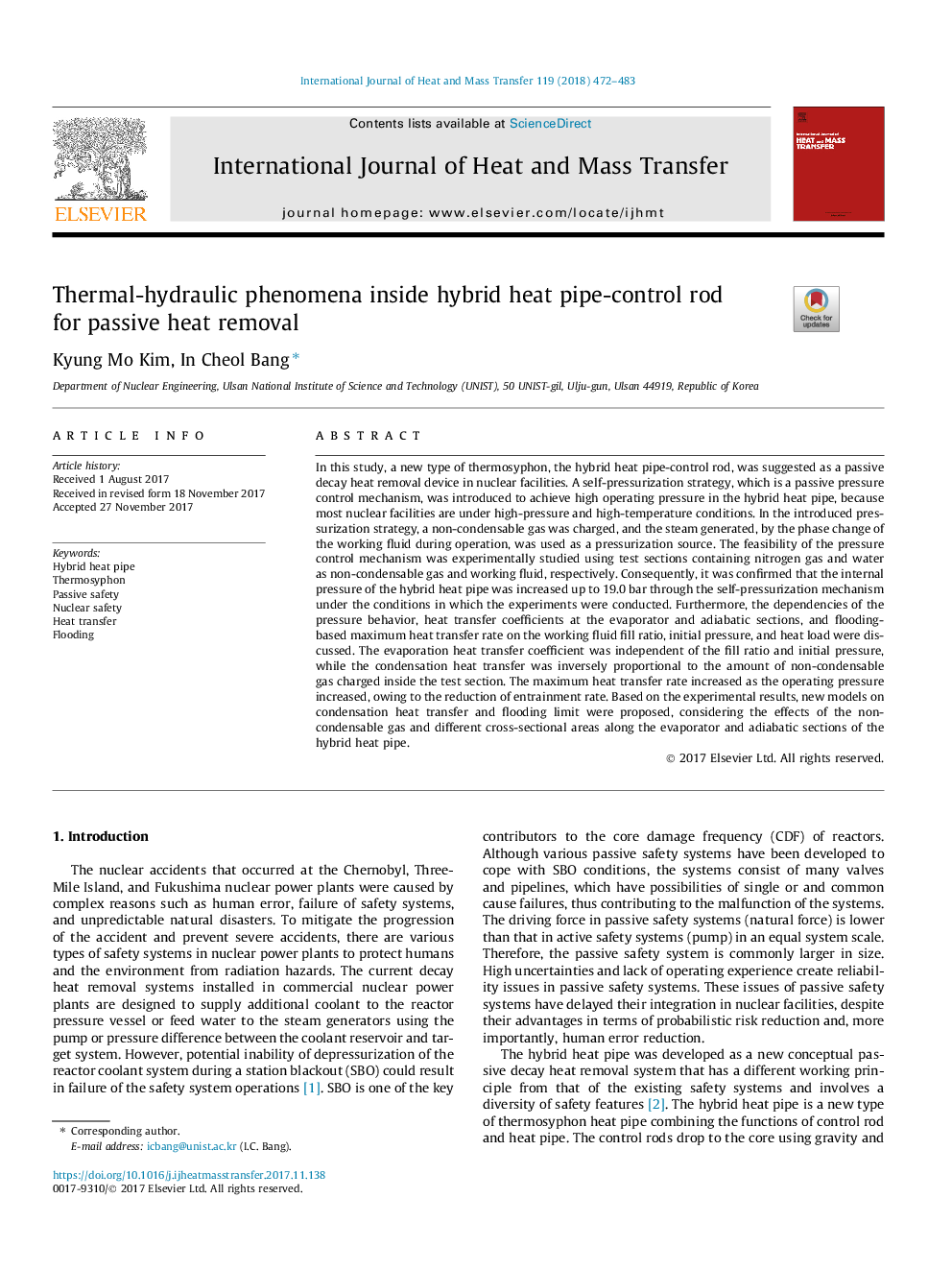| کد مقاله | کد نشریه | سال انتشار | مقاله انگلیسی | نسخه تمام متن |
|---|---|---|---|---|
| 7054678 | 1458021 | 2018 | 12 صفحه PDF | دانلود رایگان |
عنوان انگلیسی مقاله ISI
Thermal-hydraulic phenomena inside hybrid heat pipe-control rod for passive heat removal
ترجمه فارسی عنوان
پدیده هیدرولیکی در میان گرمای کنترل گرمایی هیبرید برای حذف حرارتی منفعل
دانلود مقاله + سفارش ترجمه
دانلود مقاله ISI انگلیسی
رایگان برای ایرانیان
کلمات کلیدی
لوله گرما ترکیبی ترموسفون، ایمنی منفعل، ایمنی هسته ای، انتقال گرما، سیلاب،
موضوعات مرتبط
مهندسی و علوم پایه
مهندسی شیمی
جریان سیال و فرایندهای انتقال
چکیده انگلیسی
In this study, a new type of thermosyphon, the hybrid heat pipe-control rod, was suggested as a passive decay heat removal device in nuclear facilities. A self-pressurization strategy, which is a passive pressure control mechanism, was introduced to achieve high operating pressure in the hybrid heat pipe, because most nuclear facilities are under high-pressure and high-temperature conditions. In the introduced pressurization strategy, a non-condensable gas was charged, and the steam generated, by the phase change of the working fluid during operation, was used as a pressurization source. The feasibility of the pressure control mechanism was experimentally studied using test sections containing nitrogen gas and water as non-condensable gas and working fluid, respectively. Consequently, it was confirmed that the internal pressure of the hybrid heat pipe was increased up to 19.0â¯bar through the self-pressurization mechanism under the conditions in which the experiments were conducted. Furthermore, the dependencies of the pressure behavior, heat transfer coefficients at the evaporator and adiabatic sections, and flooding-based maximum heat transfer rate on the working fluid fill ratio, initial pressure, and heat load were discussed. The evaporation heat transfer coefficient was independent of the fill ratio and initial pressure, while the condensation heat transfer was inversely proportional to the amount of non-condensable gas charged inside the test section. The maximum heat transfer rate increased as the operating pressure increased, owing to the reduction of entrainment rate. Based on the experimental results, new models on condensation heat transfer and flooding limit were proposed, considering the effects of the non-condensable gas and different cross-sectional areas along the evaporator and adiabatic sections of the hybrid heat pipe.
ناشر
Database: Elsevier - ScienceDirect (ساینس دایرکت)
Journal: International Journal of Heat and Mass Transfer - Volume 119, April 2018, Pages 472-483
Journal: International Journal of Heat and Mass Transfer - Volume 119, April 2018, Pages 472-483
نویسندگان
Kyung Mo Kim, In Cheol Bang,
